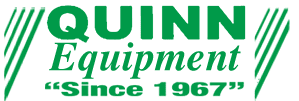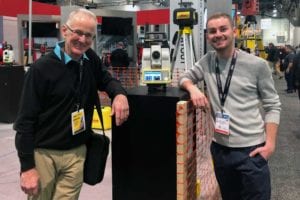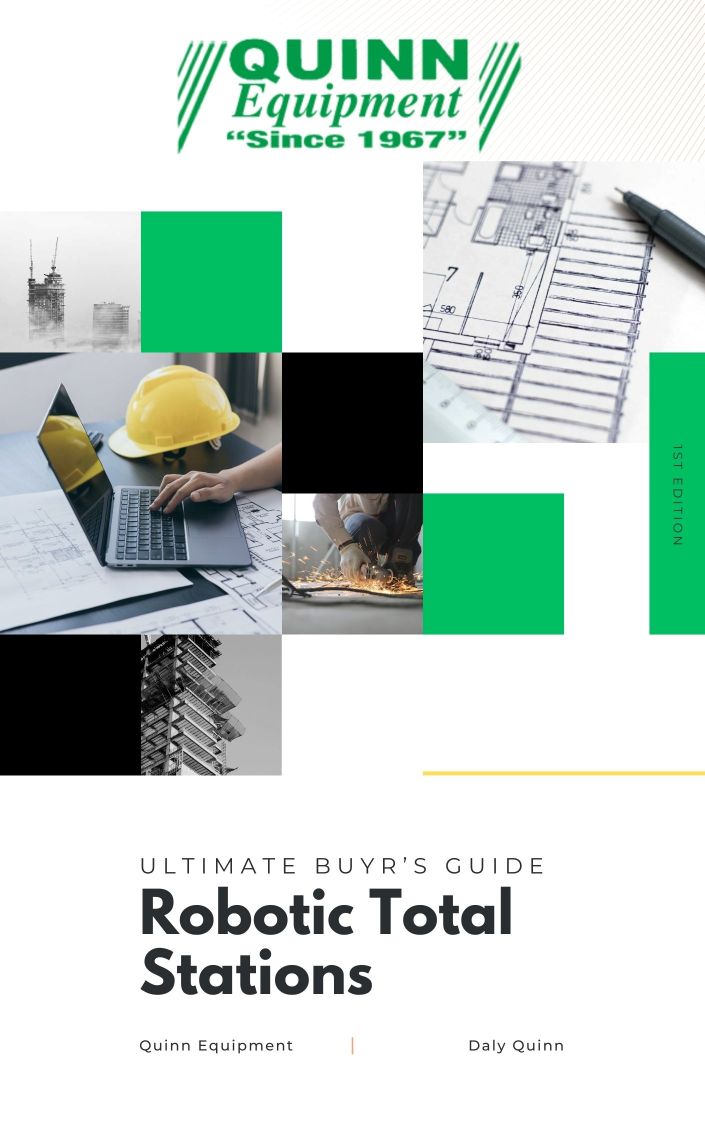Table Of Contents:
- Key Takeaways
- Exploring the Fundamental Features of Total Stations
- Setting Up a Total Station for Accurate Measurements
- Mastering Measurement Techniques With Total Stations
- Identifying and Reducing Errors in Total Station Use
- Utilizing Advanced Features of Modern Total Stations
- Selecting the Right Total Station for Your Needs
Are you struggling to achieve precise measurements in your construction projects? Total stations are powerful tools that can revolutionize your data collection and boost productivity. This article explores the essential features of total stations, including their laser pointer and LiDAR capabilities. We'll guide you through proper setup, measurement techniques, and calibration to minimize errors. By the end, you'll understand how to select the right total station for your needs, ensuring accuracy and efficiency in your work.
Key Takeaways
- Total stations combine precision measurement with advanced data processing for construction and surveying tasks
- Proper setup, alignment, and leveling are crucial for accurate measurements with total stations
- Advanced features like GPS integration and onboard software enhance surveying precision and efficiency
- Identifying and reducing errors in total station use is essential for accurate results
- Selecting the right total station involves evaluating features, cost, and long-term value for specific project needs
Exploring the Fundamental Features of Total Stations

total stations are essential tools in construction and surveying, combining precision measurement with advanced data processing capabilities. Understanding their fundamental features is crucial for effective use. This section explores the essential parts of a total station, including its interface and global positioning system components, as well as the basic operations that make these Topcon devices indispensable in modern construction projects.
Identify the Essential Parts of a Total Station
Total stations consist of several essential components that work together to provide accurate measurements. The primary parts include the telescope, which houses the electronic distance measurement (EDM) system and crosshairs for precise targeting. The base of the instrument contains the tribrach, allowing for leveling and centering over a survey point.
Modern total stations incorporate advanced features such as wireless connectivity and 3D scanning capabilities. These enhancements enable seamless data transfer and the creation of detailed point clouds for comprehensive site analysis. The integration of these technologies has revolutionized geodesy and construction layout processes.
The control panel and display screen serve as the user interface, allowing operators to input data and view measurements. Many total stations also include built-in GPS receivers for determining absolute position and elevation. These components work in tandem to provide surveyors with a confidence interval for their measurements, ensuring high precision in various field conditions.
Understand the Basic Operations and Functions of Total Stations
Total stations perform essential operations through electronic triangulation, measuring distances and angles with high precision. These devices use electromagnetic wave technology to calculate distances, while integrated software processes the data to determine coordinates. The standard deviation of measurements is typically within millimeters, ensuring accuracy in construction layout and geodetic surveys.
Modern total stations incorporate automatic target recognition systems, streamlining the measurement process. This feature allows the instrument to lock onto and track a prism or reflectorless target, reducing human error and increasing efficiency. Advanced models also include robotic capabilities, enabling remote operation and further enhancing productivity on construction sites.
Data collection and stake out functions are fundamental to total station operations. Surveyors can input design coordinates and use the instrument to guide the placement of construction elements precisely. The ability to store and transfer data electronically facilitates seamless integration with computer-aided design (CAD) software, enabling real-time project updates and quality control:
The sun dipped low as the surveyor finished exploring the total station's features. Now, with practiced hands, he prepared to set up the instrument for the real work ahead.
Setting Up a Total Station for Accurate Measurements

Setting up a total station correctly is crucial for accurate measurements in surveying and construction. This process involves careful site preparation, equipment handling, and precise alignment. The following sections detail how to prepare the site and equipment for accurate surveying, and align and level the total station for precise results. These steps ensure optimal performance, considering factors such as speed, application software, angle measurement, communication capabilities, and budget constraints.
Prepare the Site and Equipment for Accurate Surveying
Preparing the site for total station surveying requires careful consideration of environmental factors. Surveyors must clear the area of obstructions and establish stable ground for the instrument setup. This preparation enhances efficiency and ensures the total station's theodolite component can operate without interference.
Equipment preparation involves checking and calibrating the total station before use. Surveyors should verify the instrument's software is up-to-date and functioning correctly. This step is crucial for maintaining the total station's accuracy and reliability in the field.
Organizing necessary accessories, such as tripods, prisms, and data collectors, streamlines the surveying process. Surveyors should ensure all components are compatible with their total station model and in good working condition. This preparation facilitates seamless integration with computer systems for data processing and analysis.
Align and Level the Total Station for Precise Results
Aligning and leveling a total station is crucial for obtaining precise measurements. Engineers begin by setting up the tripod, ensuring its legs are firmly planted on stable ground. The tribrach, which connects the instrument to the tripod, must be carefully adjusted to achieve a level base for the total station.
Once the tripod is secure, surveyors use the instrument's built-in bubble levels to fine-tune its position. This process involves adjusting the leveling screws to center the bubbles, ensuring the total station is perfectly horizontal. Proper leveling is essential for accurate angular measurements and slope calculations.
After leveling, the total station must be centered over the survey point. Surveyors use the optical or laser plummet to align the instrument precisely above the ground mark. This step is critical for maintaining the accuracy of coordinate measurements and subsequent data storage. The alignment process may require multiple iterations to achieve the highest precision:
- Set up the tripod on stable ground
- Attach the tribrach and level it using bubble levels
- Mount the total station on the tribrach
- Use leveling screws to fine-tune the instrument's position
- Center the total station over the survey point using the plummet
- Verify alignment and make final adjustments
With the Total Station set up, the real work begins. Now, let's explore how to master measurement techniques for precise results.
Mastering Measurement Techniques With Total Stations

Mastering measurement techniques with total stations is crucial for accurate surveying and construction layout. This section explores conducting horizontal and vertical angle measurements and collecting precise distance data. These optical instruments, essential in mining and various construction applications, combine advanced technology with traditional surveying principles to provide reliable measurements for diverse projects.
Conduct Horizontal and Vertical Angle Measurements
Conducting horizontal and vertical angle measurements with total stations requires precision and careful observation. Surveyors use the instrument's optics and laser technology to sight targets and record accurate angular readings. The instrument's accuracy relies on proper calibration and alignment, ensuring reliable topographic data collection.
Horizontal angle measurements involve rotating the total station's alidade around its vertical axis. Surveyors sight multiple targets in sequence, recording the horizontal circle readings to determine relative positions. This process forms the foundation for creating accurate site plans and maps.
Vertical angle measurements utilize the total station's telescope, which rotates around the horizontal axis. These observations are crucial for determining elevation differences and creating topographic profiles. By combining horizontal and vertical angle measurements with precise distances, surveyors can generate comprehensive 3D models of project sites.
Collect Precise Distance Data Using Total Stations
Total stations employ advanced electronic distance measurement (EDM) technology to collect precise distance data. These instruments use infrared or laser beams to measure distances to targets, achieving accuracy within millimeters. By integrating GLONASS and other satellite positioning systems, total stations enhance their positioning capabilities, especially in challenging environments like tunnels.
Surveyors use total stations to calculate volumes and generate statistics for earthwork projects. The instrument's ability to measure multiple points quickly allows for accurate volume calculations of excavations or stockpiles. This feature proves invaluable in tunnel construction, where precise measurements are critical for safety and efficiency.
Modern total stations offer various measurement modes to suit different project requirements. Reflectorless technology enables distance measurements without the need for a prism, facilitating data collection in hard-to-reach areas. Prism tracking modes allow for continuous measurements, ideal for monitoring structural deformations or guiding construction machinery. The following table illustrates common measurement modes and their applications:
Mastering measurement techniques is only half the battle. Errors can still creep in, threatening the accuracy of your work.
Identifying and Reducing Errors in Total Station Use

Identifying and reducing errors in total station use is crucial for accurate surveying and construction layout. This section examines common sources of measurement errors, including deviations in the tribrach, antenna, and sensor components. It also explores effective methods to enhance accuracy and precision, integrating advanced techniques like building information modeling to minimize errors and improve project outcomes.
Recognize Common Sources of Measurement Errors
Total stations rely on precise measurements of height and signal to deliver accurate data. Common errors stem from improper instrument setup, including misalignment of the tribrach or incorrect centering over the survey point. These errors can significantly impact the accuracy of collected data, especially in Robotic Total Stations where automated processes amplify small discrepancies.
Environmental factors also contribute to measurement errors. Temperature fluctuations, atmospheric refraction, and vibrations can affect the propagation of signals used in distance measurements. Advanced technology in modern total stations compensates for some of these factors, but surveyors must remain vigilant to ensure optimal performance in varying field conditions.
Human errors present another significant source of inaccuracies. Incorrect data entry, misinterpretation of instrument readings, or failure to properly calibrate the total station can lead to flawed results. Regular training and adherence to standardized procedures help minimize these errors:
- Instrument setup errors
- Environmental factors
- Human errors in operation and data handling
- Calibration inconsistencies
- Signal interference in robotic systems
Apply Effective Methods to Enhance Accuracy and Precision
Enhancing accuracy and precision in total station use requires a combination of proper calibration and advanced surveying techniques. Regular calibration of the instrument ensures that its internal components, including the beam generator and angle sensors, maintain optimal performance. Surveyors should follow manufacturer guidelines for calibration intervals and procedures to minimize systematic errors.
Implementing rigorous field procedures significantly improves measurement accuracy. Surveyors can employ techniques such as face left and face right observations to eliminate collimation errors. Additionally, using precise leveling methods and carefully centering the instrument over survey points reduces setup errors. These practices contribute to more reliable data collection and improved overall project accuracy.
Leveraging advanced data communication features in modern total stations enhances precision in navigation and surveying tasks. Real-time data transfer capabilities allow for immediate verification of measurements and quick error detection. Integration with specialized surveying software enables on-site data processing and quality control, ensuring that potential errors are identified and addressed promptly. Effective use of these technologies optimizes workflow efficiency and measurement accuracy:
- Regular instrument calibration
- Rigorous field procedures (face left/right observations)
- Precise leveling and centering techniques
- Real-time data transfer and verification
- Integration with specialized surveying software
Errors reduced. Advanced features beckon. The Total Station holds more secrets, waiting to be unlocked.
Utilizing Advanced Features of Modern Total Stations

Modern total stations offer advanced features that enhance surveying precision and efficiency. These include onboard software for data processing and GPS integration, which improve accuracy and expand capabilities. By leveraging optical and robotic technologies, surveyors can minimize errors and optimize prism tracking. This section explores how to implement these features effectively.
Implement Onboard Software Features for Data Processing
Modern total stations incorporate advanced onboard software features that streamline data processing in the field. These systems integrate with EDM technology to provide real-time calculations and adjustments, enhancing measurement accuracy. Surveyors can efficiently process raw data, perform coordinate transformations, and generate preliminary reports without leaving the job site.
The onboard software often includes assisted GNSS capabilities, allowing seamless integration of satellite positioning data with traditional surveying measurements. This feature enables surveyors to establish control points quickly and verify their position in challenging environments. Additionally, advanced image processing tools help in documenting site conditions and creating detailed visual references for later analysis.
Battery management is crucial for extended field operations, and modern total stations incorporate intelligent power systems. These systems optimize energy consumption, providing longer operational times and reducing the need for frequent battery changes. Remote control functionality further enhances efficiency, allowing surveyors to operate the instrument from a distance and adjust settings without direct physical interaction.
Utilize GPS Integration to Enhance Surveying Capabilities
GPS integration in modern total stations enhances surveying capabilities by combining satellite positioning with traditional optical measurements. This fusion allows surveyors to establish accurate control points rapidly, even in areas with limited visibility. The integration of GPS technology complements the telescope's precision, enabling surveyors to work efficiently in diverse environments and challenging terrain.
Advanced total stations utilize GPS data to improve the accuracy of distance measurements and coordinate determination. This integration compensates for atmospheric effects and other environmental factors that can impact the spirit level and electronic distance measurement (EDM) systems. By leveraging GPS, surveyors can achieve higher precision in their measurements, crucial for complex engineering projects and large-scale surveys.
The combination of GPS and total station technology streamlines workflow in the field. Surveyors can seamlessly switch between GPS and optical measurements, optimizing data collection based on site conditions and project requirements. This flexibility enhances productivity and ensures comprehensive coverage, particularly in areas where traditional line-of-sight methods may be limited by obstacles or poor visibility.
Advanced features enhance precision. But which Total Station suits your project best?
Selecting the Right Total Station for Your Needs

Selecting the right total station is crucial for civil engineers and surveyors. This section evaluates key factors to consider when choosing a total station, including microprocessor capabilities and Leica Geosystems offerings. It also compares various models based on features and cost, helping professionals make informed decisions for their specific project needs.
Evaluate Key Factors When Choosing a Total Station
When selecting a total station, engineers must consider the instrument's ability to handle various terrain conditions. Advanced models offer features like automatic target recognition and reflectorless measurement capabilities, enabling efficient data collection in challenging environments. These features prove invaluable when working in areas with limited access or obstructed sightlines.
The quality of infrared and visible light technologies used in total stations significantly impacts measurement accuracy. High-end instruments incorporate precise distance measurement systems, ensuring reliable results even in adverse weather conditions. Bluetooth connectivity enhances data transfer capabilities, allowing seamless integration with other devices and software for real-time processing.
Information processing power is a crucial factor in modern total stations. Instruments with robust onboard software and ample storage capacity facilitate efficient field work by enabling complex calculations and data management on-site. The ability to handle large datasets and perform advanced measurement routines directly in the field can significantly improve project timelines and reduce errors:
Compare Total Station Models Based on Features and Cost
Comparing total station models requires careful consideration of features and cost to optimize workflow efficiency. High-end Robotic Total Stations offer advanced capabilities such as automatic target recognition and remote operation, significantly reducing labor requirements on large projects. These features enable surveyors to work more efficiently, particularly in challenging environments where traditional methods may be impractical.
Mid-range models often strike a balance between functionality and affordability, providing essential features for most surveying tasks. Many of these instruments incorporate built-in cameras, enhancing documentation capabilities and facilitating remote collaboration. The integration of cameras enables surveyors to capture visual data alongside measurements, improving overall project documentation and analysis.
Cost considerations extend beyond the initial purchase price to include factors such as maintenance, software upgrades, and training requirements. Manufacturers like Leica Geosystems offer a range of models to suit various budgets and project needs. When evaluating total stations, professionals should assess the long-term value, considering how features like wireless connectivity and advanced data processing capabilities can streamline workflows and reduce operational costs over time.





